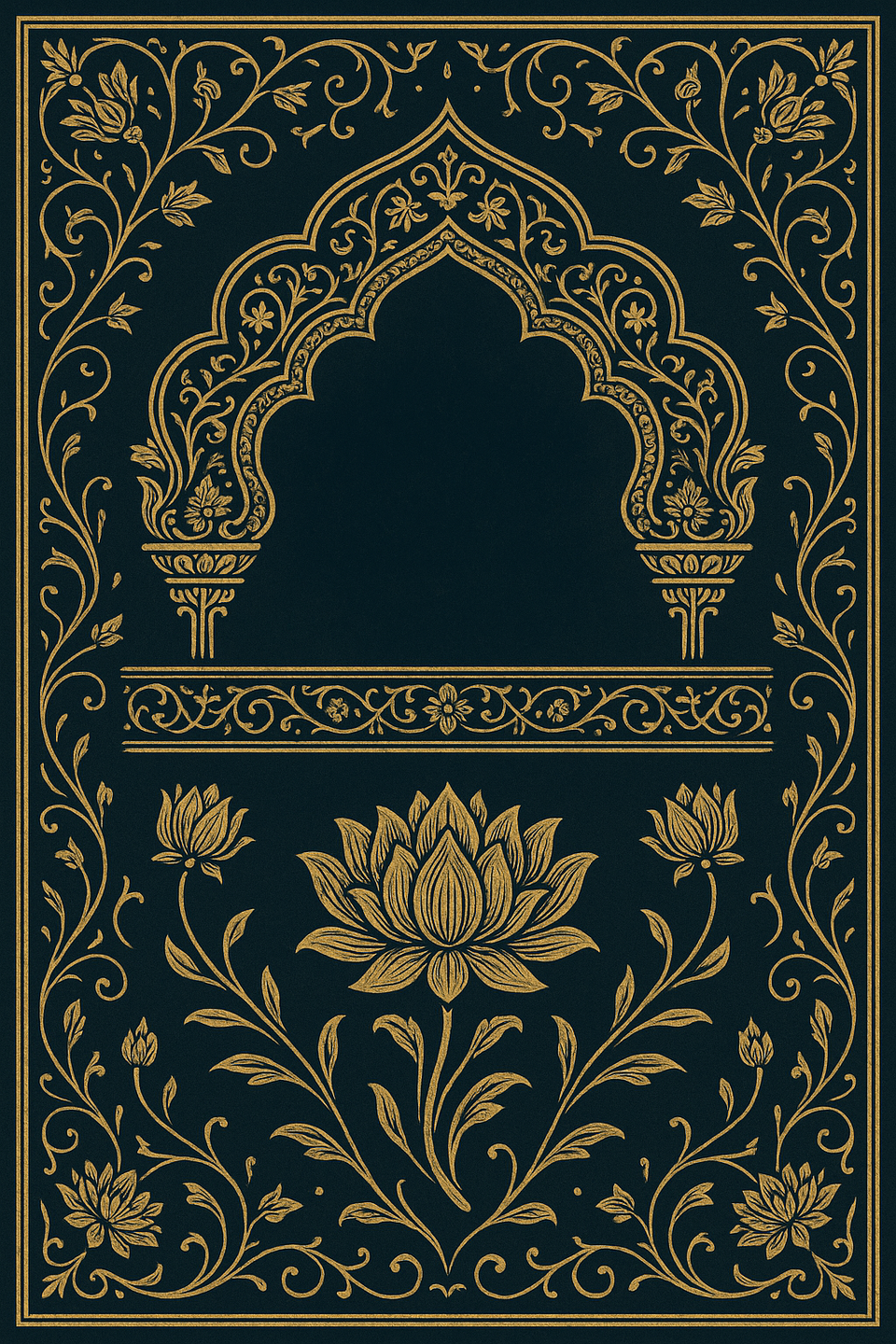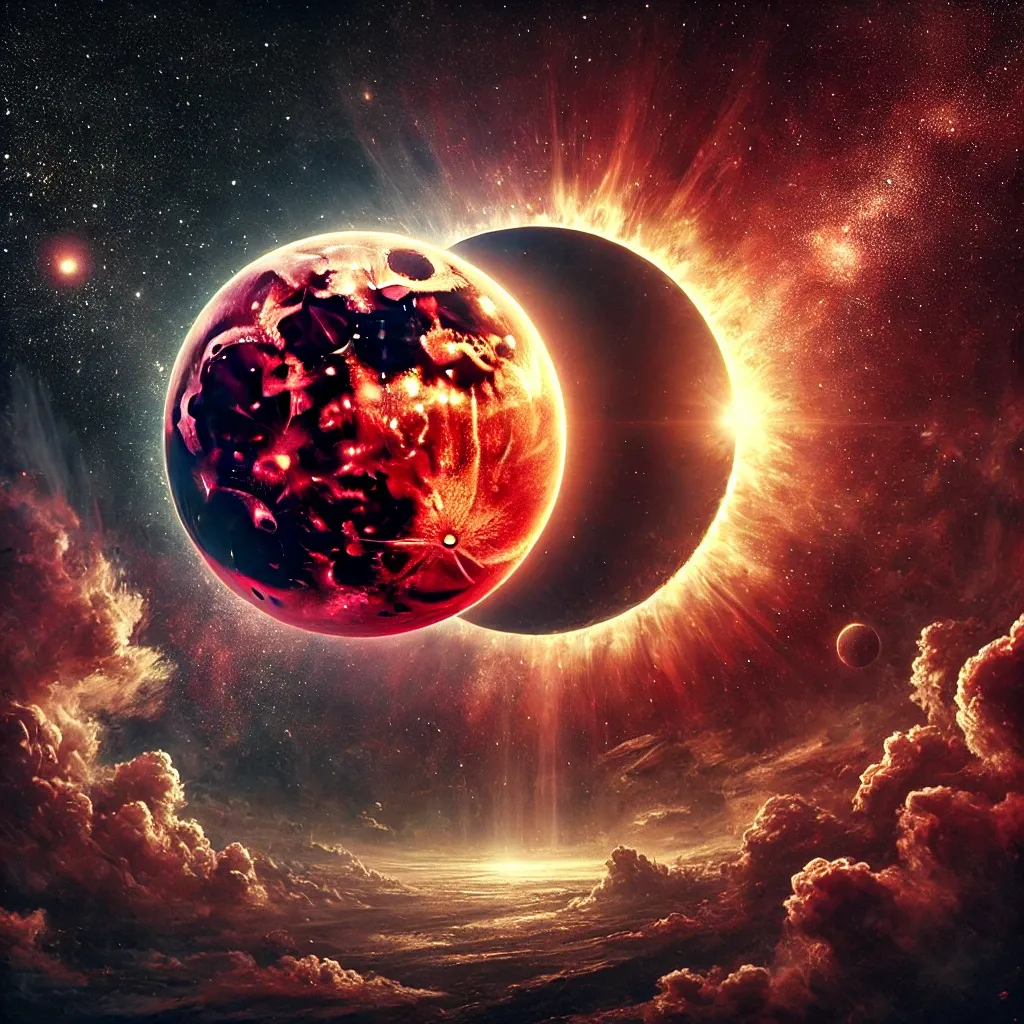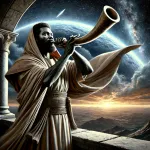Jai Yeshu Masih

A Treatise to India: Eternal Truth Within the Divine Tapestry
I. The Common Quest: From Primordial Origins to Ultimate Reality
The profound spiritual heritage of India stands as humanity's most ancient and continuous quest to comprehend divine reality. The Vedas, Upanishads, and subsequent philosophical traditions represent the noblest efforts of the human intellect to penetrate the ultimate mysteries of existence.
This quest began at humanity's shared origin. Before the dispersion from Babel (Genesis 11), all people possessed the knowledge of the one true Creator. As humanity scattered across the earth, this primordial knowledge was simultaneously preserved and distorted. While the outward forms diverged dramatically, the inner spiritual yearnings remained fundamentally the same—the universal human longing to reconnect with the divine source.
In India, this quest developed with unparalleled depth and sophistication. The Rishis and sages, through meditation and ascetic discipline, perceived profound spiritual truths: the illusory nature of material existence (maya), the eternal nature of consciousness (atman), and the underlying unity of all reality (Brahman). These insights represent genuine spiritual perception, though seen "through a glass, darkly" (1 Corinthians 13:12).
II. The Quest for Brahman and the Reality of the Transcendent One
The Upanishadic understanding of Brahman as the ultimate, impersonal reality underlying all existence approaches the biblical revelation of God's omnipresence—"in him we live and move and have our being" (Acts 17:28). Yet the scriptures reveal a greater reality: YHWH as both transcendent and personal.
The concept of nirguna Brahman (Brahman without attributes) recognizes that ultimate reality transcends human conceptualization. This intuition is correct—YHWH declares: "My thoughts are not your thoughts, neither are your ways my ways" (Isaiah 55:8). Yet YHWH is not an impersonal force or principle but a conscious, personal Being who thinks, feels, speaks, and acts purposefully within history.
The saguna Brahman (Brahman with attributes) manifesting through various deities acknowledges humanity's need to relate to the divine in personal terms. This intuition also contains truth—YHWH has indeed made Himself knowable through self-revelation. However, rather than manifesting as multiple deities representing cosmic forces, the one true God revealed Himself ultimately and perfectly through Yeshua (Jesus Christ), "the image of the invisible God" (Colossians 1:15).
III. The Atman-Brahman Unity and the Indwelling Spirit
The Upanishadic insight "Aham Brahmasmi" ("I am Brahman") and "Tat Tvam Asi" ("That Thou Art") express the profound intuition that human consciousness shares in divine nature. This spiritual insight approaches the biblical revelation that humans are created "in the image of God" (Genesis 1:27) with an innate capacity for divine communion.
However, Scripture reveals that sin has fractured this connection. The goal is not merely recognizing an already-existing unity but experiencing reconciliation and restoration through Christ. When Christ indwells the believer through the Holy Spirit, a union more profound than Atman-Brahman is realized—not a merging of identity but a perfect communion of distinct persons in love.
The Christian experiences what the Advaita tradition seeks—divine indwelling—but without the dissolution of personal identity. "It is no longer I who live, but Christ who lives in me" (Galatians 2:20). Yet simultaneously, "I" remain a distinct person in loving relationship with God. This preserves both the intimacy of divine union and the beauty of relationship that requires distinction.
IV. Karma, Samsara, and the Liberation of Christ
The doctrines of karma and samsara recognize profound spiritual truths: actions have consequences that extend beyond a single lifetime, and existence apart from liberation is characterized by suffering. These insights align with biblical wisdom that "whatever one sows, that will he also reap" (Galatians 6:7) and that creation is "subjected to futility" and in "bondage to corruption" (Romans 8:20-21).
However, karma presents an impersonal cosmic law with no possibility of intervention, while Scripture reveals a personal God who both judges righteously and extends mercy. The burden of karma accumulates across lifetimes with no final resolution except through gradually working off karmic debt—a task practically impossible for most souls.
Christ offers a superior liberation. On the cross, He took upon Himself the full karmic debt of humanity: "He himself bore our sins in his body on the tree" (1 Peter 2:24). This wasn't merely transferring the burden but transforming it through divine love. The resurrection demonstrates victory over the cycle of birth and death—not by escaping material existence but by transforming it.
The moksha (liberation) offered in Christ surpasses traditional Hindu conceptions:
- It is available immediately rather than after countless lifetimes
- It preserves personal identity rather than dissolving it
- It transforms material existence rather than escaping it
- It establishes loving relationship rather than isolated transcendence
V. The Cosmic Dance: Rta, Dharma, and Divine Order
The Hindu conception of cosmic order (rta) and the individual's duty within it (dharma) recognizes that the universe operates according to divine principles and that humans have sacred obligations. Scripture affirms this through the concept of divine law written into creation itself: "The heavens declare the glory of God" (Psalm 19:1).
The struggle to maintain dharma in a world of adharma (disorder) mirrors the biblical understanding of righteousness in a fallen world. The avatars who descend to restore dharma express the genuine spiritual intuition that divine intervention is necessary to restore cosmic order.
Christ fulfills and transcends this intuition. He declares, "I came not to abolish the Law but to fulfill it" (Matthew 5:17). Rather than merely restoring the existing order, Christ inaugurates a new creation while fulfilling the spiritual essence of the old. He doesn't simply teach dharma—He embodies it perfectly and empowers His followers to live it through the indwelling Spirit.
VI. The Divine Incarnation: Avatars and the Word Made Flesh
The Hindu tradition of divine avatars—God descending in various forms to intervene in human affairs—contains profound spiritual insight. It recognizes that:
- The divine must enter human experience to restore cosmic order
- God's transcendence doesn't prevent immanence
- Divine incarnation serves specific purposes in history
Each avatar reveals aspects of divine nature: Matsya demonstrates divine preservation, Rama epitomizes righteous authority, Krishna reveals divine play and wisdom, and Buddha embodies compassion and enlightenment.
In Christ, these manifestations find their complete fulfillment. Jesus is not one temporary avatar among many but "the fullness of deity in bodily form" (Colossians 2:9). His incarnation is permanent—the resurrection body ascends to heaven, forever uniting humanity with divinity.
Unlike the avatars who manifest divine power to destroy demons, Christ manifests divine humility: "Though he was in the form of God... he emptied himself, taking the form of a servant" (Philippians 2:6-7). His victory comes not through overwhelming power but through apparent defeat transformed into triumph.
VII. Bhakti and the Path of Devotion Fulfilled
The bhakti tradition in Hinduism, with its emphasis on loving devotion to a personal deity, represents one of humanity's purest spiritual intuitions. The profound devotion of saints like Mirabai, Tukaram, and Chaitanya demonstrates that the highest human fulfillment comes through loving surrender to God.
This path finds its perfect fulfillment in relationship with Christ, who declares, "As the Father has loved me, so have I loved you. Abide in my love" (John 15:9). The bhakti tradition seeks what Christ freely offers: intimate communion with God through love.
The Christian mystical tradition parallels bhakti in many ways, but with a crucial difference: the object of devotion is not a mythological figure but the historical person of Jesus, whose life, death, and resurrection occurred in documented history. The bhakta's devotion can thus be directed toward a God who demonstrably entered human history rather than remaining in the realm of symbolic mythology.
VIII. Sacrifice, Puja, and True Worship
The Hindu traditions of sacrifice and worship (puja) recognize the human need to approach the divine through offering. From the ancient Vedic fire sacrifices to contemporary temple worship, these rituals express genuine spiritual intuitions about communion with the divine requiring sacrifice.
Christ fulfills this intuition completely. He is simultaneously the perfect priest, the perfect offering, and the perfect temple. "He has appeared once for all at the end of the ages to put away sin by the sacrifice of himself" (Hebrews 9:26).
The Christian does not need endless rituals or offerings but participates in Christ's one perfect sacrifice through faith. True puja becomes "to present your bodies as a living sacrifice, holy and acceptable to God, which is your spiritual worship" (Romans 12:1).
IX. The Divine Community: From Caste to Body of Christ
The caste system, despite its historical distortions, originally expressed the insight that human society forms an interconnected body with different functions. Scripture affirms that humanity is indeed meant to function as an organic unity with diversity: "For just as the body is one and has many members... so it is with Christ" (1 Corinthians 12:12).
However, in Christ, this unity comes not through hierarchical division but through equal dignity with functional diversity. "There is neither Jew nor Greek, slave nor free, male nor female, for you are all one in Christ Jesus" (Galatians 3:28). The Body of Christ preserves the insight of interdependence while eliminating the injustice of hierarchy based on birth.
In the Christian community, everyone regardless of background has "the same Lord, who gives generously to all" (Romans 10:12). This fulfills the deepest spiritual intuition behind varna while removing its limitations—true human unity with diversity, but without inherited status.
X. The End of the Cosmic Cycle: Kali Yuga and the Coming Kingdom
Hindu cosmology recognizes that the universe moves through cycles of creation and dissolution, with the Kali Yuga representing the final, darkest age before cosmic renewal. This insight aligns with biblical eschatology, which describes increasing darkness before the dawn of God's Kingdom.
We are indeed in the final stages of this cosmic cycle. The Christian Bible demonstrates with mathematical precision that we stand at the cusp of the great transition—the completion of the current cosmic order and the inauguration of the new. The signs in world events align perfectly with the scriptural description of the end of the age.
Christ will return not merely to continue the cycle but to culminate and transform it. The Kingdom he establishes will not be another temporary age but the eternal reign of righteousness: "Of his kingdom there will be no end" (Luke 1:33). This fulfills the deepest intuition behind the cosmic cycles—the universe is indeed moving toward a climactic transformation, but one that breaks the cycle permanently.
XI. An Invitation to Ultimate Reality
Dear seeker, the spiritual insights of the Hindu tradition contain profound truth—yet now the complete reality to which they point has been revealed in Christ. The Upanishadic sages perceived the shadow; Christ is the substance.
Your spiritual journey need not end with philosophical speculation or endless cycles of rebirth. The transcendent Creator has made Himself known. The impersonal Brahman is actually the personal God who loves you. The atman within you longs not for dissolution but for communion with the divine Person who created you.
The Kingdom of God approaches with mathematical precision—the cosmic timeline is nearing its culmination. As the signs align around us, the invitation of Christ becomes ever more urgent: "The time is fulfilled, and the kingdom of God is at hand; repent and believe in the gospel" (Mark 1:15).
May you, who have sought the divine through many paths, now find complete fulfillment in Him who is "the way, the truth, and the life" (John 14:6). For in Christ, all the spiritual treasures of wisdom and knowledge that India has sought for millennia are now fully revealed and freely offered.
Jai Yeshu Masih. Glory to Jesus Christ.


Comments ()